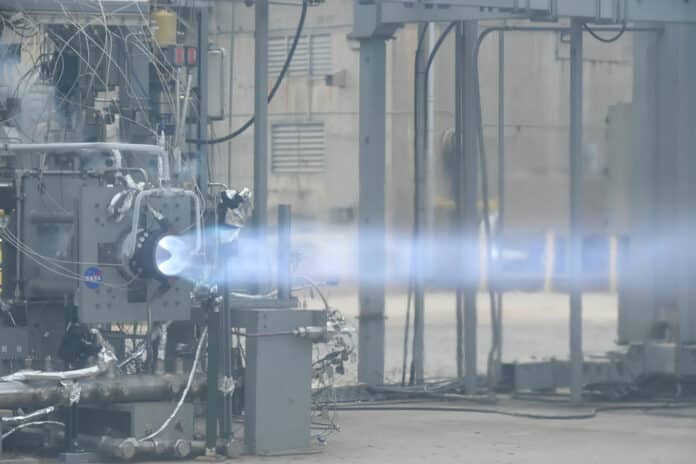To extend human presence beyond low-Earth orbit, leading to human exploration of Mars, we really need to rethink the means of propulsion for space travel. While current rocket engines are efficient enough to send rovers to Mars, they may not be adequate to support crewed missions and their need for more cargo.
One of the technologies that NASA is investigating is the rotating detonation engine. This engine generates detonation waves from the explosion of fuel and oxidizer, producing self-sustaining pressure waves that travel at supersonic speeds and produce the necessary thrust.
The space agency has now announced the successful testing of a novel Rotating Detonation Rocket Engine (RDRE) for 251 seconds, producing more than 5,800 pounds of thrust. That kind of sustained burn emulates typical requirements for a lander touchdown or a deep-space burn that could set a spacecraft on course from the Moon to Mars.
Rotating detonation engines (RDEs) work differently than other detonation engines. Rather than using oblique waves or pulses, RDEs use ring-shaped chambers and precise fuel injections to generate a constant thrust. The explosions produce shockwaves that generate thrust and travel around the ring to trigger the next explosion. It’s incredible how much innovation is happening in the field of propulsion technology.
The engine is built using powder bed fusion 3D printing and NASA’s own GRCop-42 copper alloy, which enables it to withstand the extreme conditions of sustained detonation without overheating.
RDRE’s first hot fire test was performed at Marshall in the summer of last year in partnership with In Space LLC and Purdue University, both of Lafayette, Indiana. That test saw it produced over 4,000 pounds of thrust for nearly a minute at an average chamber pressure of 622 pounds per square inch.
According to Thomas Teasley, who leads the RDRE test effort at the center, the primary goal of the latest test is to better understand how to scale the combustor to meet the requirements of different engine systems and their thrust requirements. This will allow the engine to serve a wide range of missions, from landers to upper-stage engines to supersonic retropropulsion, a deceleration technique that could land larger payloads – or even humans – on the surface of Mars.
“The RDRE enables a huge leap in design efficiency,” Teasley said in a statement. “It demonstrates we are closer to making lightweight propulsion systems that will allow us to send more mass and payload further into deep space, a critical component to NASA’s Moon to Mars vision.”
NASA has yet to provide any information on when a rotating detonation engine could be deployed on a spacecraft, but the benefits of using this engine are significant. It requires less fuel to operate, which means that spacecraft can carry more payload.
NASA had previously mentioned that it’s scaling up to a fully reusable RDE in the 10,000-pound thrust class, but there hasn’t been any update on that plan with this new announcement.
